Native
Native species such as the Eastern Bluebird, Tree Swallow, House Wren, and Great-Crested Flycatcher may be attracted to your martin housing. While your yard can house both Purple Martins and other native species, they should not be allowed to nest in the martin housing.
Many of the native species are not colonial nesters like the Purple Martins. If you allow one pair of bluebirds or Tree Swallows to nest in your martin housing they may try to take over the entire house or gourd rack and drive off any interested martins.
Identification
Eastern Bluebird—Small, plump bird, male has a distinctive blue coloring on the back with a rusty red throat and breast. Females have a duller coloring. 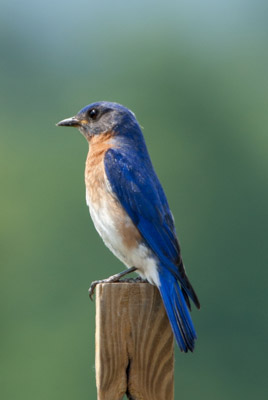
Tree Swallows—A member of the swallow family, like the Purple Martin. The Tree Swallow is smaller with a bluish-green back and a snowy white belly. 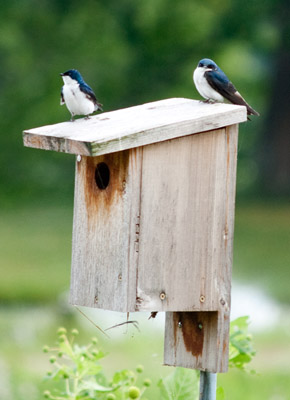
House Wrens—Tiny brown bird with a longer, curved beak.
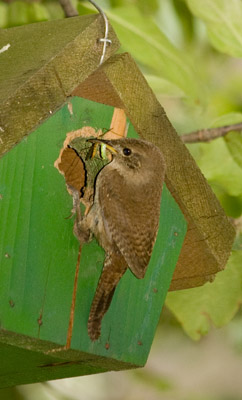
Great-Crested Flycatchers—A large bird with a slight crest, reddish-brown coloring, a gray throat and breast, and bright yellow belly. 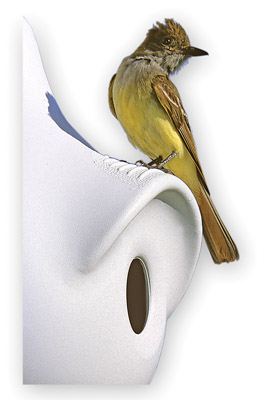
Preventative Action
Keep your martin housing closed before the martins arrive. Many of the native species will arrive earlier than the Purple Martins. If any of the native species try to nest in the martin housing, keep the entrances of the martin housing blocked and offer alternative housing.

For bluebirds and Tree Swallows offer a single-unit gourd or nestbox with a 1-1/2” opening. Place the housing 30-50 feet away from the martin housing on a post with a predator guard. Place the housing so that the entrance is about 5’ above ground, with the entrance facing the martin housing.
House Wrens prefer to nest in brushy areas, away from open habitat, with a smaller nestbox and cavity entrance measuring between 1 to 1-1/4”.
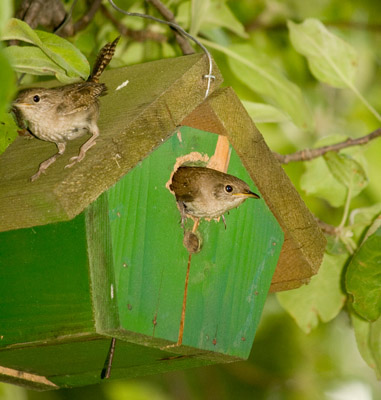
Great-Crested Flycatchers nest in woodlots and along forest edges and will nest in a single gourd or nestbox with an entrance between 1-1/2 to 2”.
Recommended Reading:
Nest Identification
Tree Swallow Emergency!
Martin 101: Dealing with Native Species
Nest Identification Infographic
